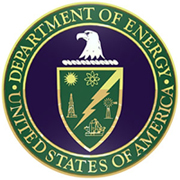
GABRIELA VAZQUEZ (Mechanical Engineering)
About DOE Fellow
Ms. Gabriela Vazquez graduated from her Bachelor of Science in mechanical engineering at Florida International University (FIU) in December 2014. Ms. Vazquez received her first bachelor’s degree in liberal studies from FIU in April 2010. Gabriela joined the DOE/FIU Science and Technology Workforce Development Program in June 2012. She is now an employee at Florida Power & Light.
From June 3 to August 9, 2013, Gabriela interned at DOE Headquarters in Germantown, Maryland with the Office of Waste Management under the mentorship of Ms. Christine Gelles, Mr. Douglas Tonkay, and Mr. James Joyce.
In September of 2013, Gabriela published a conference paper and traveled to Brussels, Belgium for the 2013 International Conference on Environmental Remediation and Radioactive Waste Management to present her research on the peristaltic crawler designed to unplug high level waste blockages in DOE Hanford transfer pipelines. Gabriela also presented her research in the student poster sessions at the 2012 and 2013 Waste Management Conference in Phoenix, Arizona and was invited as a panelist and presenter for the “Graduating Students Wants and Needs” conference session.
In November 2013, she was awarded “DOE Fellow of the Year” and 2nd place in the DOE Fellows Poster Exhibition/Competition for her summer internship research on low level and mixed low level waste treatment technology identification.
Gabriela is currently working on the design and manufacturing of an inspection device that is to navigate through DOE Hanford Site underground tanks’ 1.5 by 1.5 inch refractory air slot channels to identify potential leak locations in the tanks to allow for future repair to prevent outflow of high level waste into subsurface soil.
Gabriela is currently enrolled in a Lean Six Sigma Green Belt Online Training and Certification program to further enhance her credentials in the field. Upon graduation, Gabriela plans to continue her education in pursuit of a master’s degree in business administration.
DOE Related Projects
Gabriela is currently working on the development of an inspection tool to travel through the refractory cooling channels to provide video feedback to site engineers of the tank conditions. Tank waste has recently been found in the annulus (located between the inner shell tank and the outer shell tank) of tank AY-102 and it is believed the waste came from the tank bottom and flowed through the cooling channels of the refractory pad. The refractory pad has cooling channels paved from 72 entry points to the center of the pad. The minimum channel size is 1.5-in by 1.5-in. In order to reach the center of the tank, the device will have to navigate through the channels, encountering four 90° turns. In addition to these challenges, the device will need to be radiation hardened, be able to operate in relatively high temperatures and not subject the channel walls to pressures greater than 200 psi, the compression strength of the refractory material.
The goal is to design a device that can travel through the cooling channels providing video feedback of the tank surface and to determine potential locations of leaks. The body of the proposed design will consist of a housing frame encasing a camera and motors that give power to the wheels. To avoid potentially damaging the refractory pad and building up debris, the proposed design has a magnetic plate attached to the top frame to allow the tool to travel upside down along the bottom of the carbon steel tank.
As her summer 2013 internship research task, Gabriela researched and documented past and current treatment technologies available from U.S. private sector vendors to treat low level waste (LLW) and mixed low level waste (MLLW) for U.S DOE and U.K NDA treatment technology innovation collaboration.
Previously, Gabriela worked on the development of a peristaltic crawler as an unplugging technology for DOE Hanford Site pipelines. The US DOE Hanford Site contains high level waste (HLW) with a complex chemical composition and diverse physical characteristics. Consequently, transfer pipelines have become clogged with substances that possess a variety of properties (high radioactivity sludge and crystallized precipitates, among others) making the clogs very difficult to remove.
FIU had previously tested and evaluated various unplugging technologies through an industry call. Through mockup testing, the technology that showed the most potential to withstand the rigors of operation in a radioactive environment and have the ability to handle sharp 90° elbows was AIMM Technologies’ hydrokinetics method. Based on the lessons learned from the underlying physics shown in the data analysis yielded from AIMM’s experimental testing, two new pipeline unplugging technologies were proposed. These are the asynchronous pulsing system (APS) and the peristaltic crawler.
Working under the supervision of Mr. Tomas Pribanic, Gabriela assisted in design and experimental testing of the improved third-generation peristaltic crawler. The peristaltic crawler is a pneumatic operated crawler that propels itself by a sequence of pressurization/depressurization of cavities (inner tubes). The changes in pressure result in the translation of the vessel by peristaltic movements. The crawler includes a frontal helmet that contains a water nozzle and camera. The camera provides live visual feedback to allow site engineers to identify when the crawler is approaching a plug to get as close as possible to the blockage as well as pipe conditions. The water nozzle allows for high pressure water to break down the plug. The frontal helmet also contains two openings so that the unplugged waste can travel back through the crawler to get out of the way and allow the crawler to continue to propel forward.
